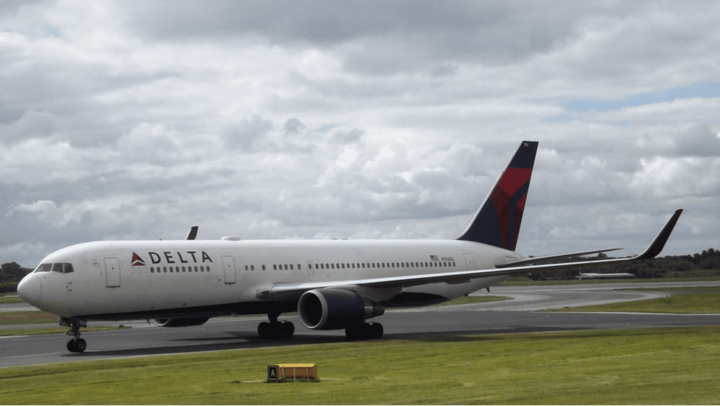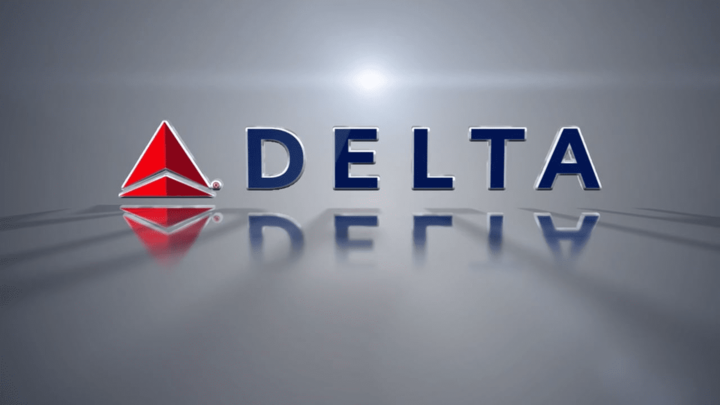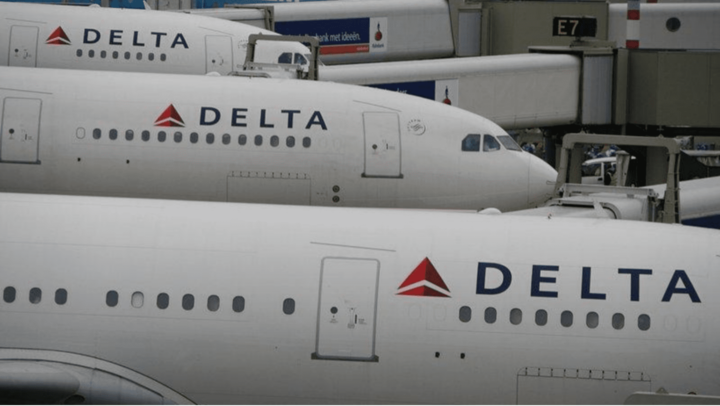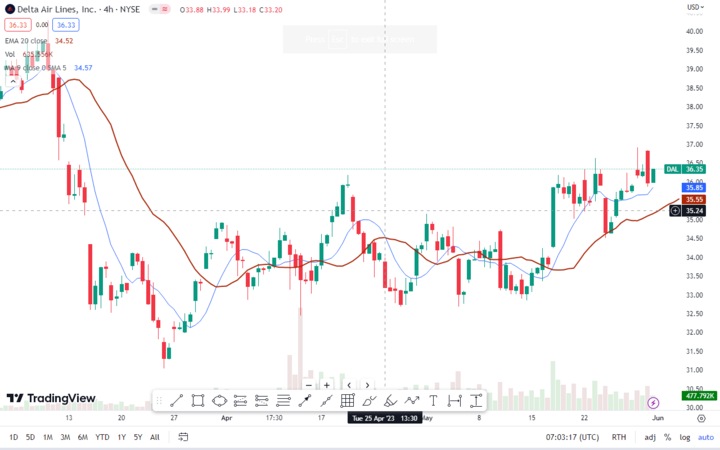Soaring through the skies since its inception in 1928, Delta Air Lines Inc. has carved a remarkable path in the aviation industry, propelling itself to become a giant. Join us as we embark on a captivating exploration of airline stock - Delta Air Lines Inc., unraveling its key milestones, current structure, and the remarkable individuals at its helm. Get ready to take flight into a world where dreams and destinations meet in perfect harmony, courtesy of Delta Air Lines.
I. Delta Air Lines Inc.'s Overview
Delta Air Lines Inc. was founded on December 3, 1928, under the name Delta Air Service. The company was founded by Collett Everman Woolman. It is currently headquartered in Atlanta, Georgia. Delta Air Lines has grown to become one of the world's largest airlines with a market capitalization of $36.3 billion and a net income of $5.3 billion.
Key Milestones in Delta Air Lines' History
2007: The company emerged from bankruptcy protection, implementing strategic initiatives to improve its financial performance.
2008: Delta Air Lines acquired Northwest Airlines, creating one of the largest airlines in the world.
2010: The integration of Northwest Airlines was successfully completed, streamlining operations and enhancing efficiency.
2013: Delta launched the Delta Sky Club at JFK Airport, offering premium amenities and services to its customers.
2016: Delta introduced Delta One Suites on select international flights, providing enhanced luxury and comfort to premium passengers.
2019: The company launched Delta Premium Select on select domestic flights, offering an upgraded travel experience.
2021: Delta Air Lines announced plans to acquire LATAM Airlines Group, expanding its presence in Latin America.
Current Company Structure and Leadership
Delta Air Lines is a global airline with a diverse fleet of over 800 aircraft and a workforce of over 90,000 employees. The company operates an extensive network of more than 300 destinations across the United States, Canada, Latin America, Europe, Asia, and Africa. As a member of the SkyTeam alliance, Delta Air Lines provides passengers with access to over 1,100 destinations worldwide.
The CEO of Delta Air Lines is Ed Bastian, who assumed the role in 2016. Bastian, a former Delta executive, has held various leadership positions within the company, including chief operating officer and president. Under his leadership, Delta has continued to focus on financial strength, operational excellence, and customer satisfaction.
Major Shareholders of Delta Air Lines: Who Owns Delta Airlines?
The Vanguard Group - The largest shareholder of Delta stock with over 10% ownership. Vanguard owns more than 66 million shares.
Berkshire Hathaway - Warren Buffett's Berkshire Hathaway owns a significant stake in Delta Air Lines with over 9% ownership and approximately 70 million shares.
BlackRock Inc. - The world's largest asset manager owns more than 6% of Delta's outstanding shares, or more than 42 million shares.
State Street Corporation - Another major financial institution, State Street owns over 3% of Delta, or approximately 20 million shares.

Source: ALAMEE
II. Delta Air Lines Inc.'s Business Model and Products/Services
A. Business Model
Delta Air Lines Inc. operates on a business model focused on providing air transportation services for both passengers and cargo. With a vast network spanning over 300 destinations across the globe, Delta offers a wide range of travel options to its customers. As a member of the SkyTeam alliance, the company provides access to an extensive network of over 1,100 destinations worldwide, enhancing connectivity and convenience for travelers.
The company's revenue streams are diversified, including ticket sales, cargo transportation, and ancillary services. Additionally, Delta Air Lines leverages its frequent flyer program, SkyMiles, to generate revenue through partnerships with credit card companies and other businesses.
B. Main Products/Services
Some of the main products and services offered by Delta Air Lines include:
Passenger air transportation: Delta operates a comprehensive network of flights, providing travel options to a wide range of destinations across the United States, Canada, Latin America, Europe, Asia, and Africa.
Cargo transportation: Delta Air Lines offers cargo services, facilitating the transportation of goods and products across its extensive network.
Ancillary services: Delta provides various ancillary services to enhance the travel experience for its customers. These include seat upgrades, baggage fees, in-flight food and beverage sales, and other additional offerings tailored to meet passenger needs.
In addition to these core products and services, Delta Air Lines offers supplementary offerings such as travel insurance, airport lounge access, and car rental discounts, further enriching the travel experience for its customers.

Source: VISIT TAMPA BAY
III. Delta Air Lines Inc.'s Financials, Growth, and Valuation Metrics
A. Review of Delta Air Lines Inc.'s Financial Statements
Revenue Growth over the Past 5 Years:
Delta Air Lines has achieved a compound annual growth rate (CAGR) of 5.5% in revenue over the past five years. This growth can be attributed to increased demand for air travel, expansion of the company's network, and growth in cargo revenue.
Profit Margins:
Delta Air Lines has witnessed an improvement in profit margins over the past five years. The operating margin has risen from 10.2% in 2018 to 12.4% in 2022. This improvement can be attributed to the company's focus on cost-cutting measures and its revenue growth.
Cash from Operations (CFFO):
Delta Air Lines has generated strong cash from operations over the past five years. The company's CFFO has grown at a CAGR of 7.5%, indicating its ability to generate cash through its core operations. The strong CFFO is driven by the company's growing revenues and improving profit margins.
Balance Sheet Strength and Implications:
Delta Air Lines maintains a strong balance sheet with a debt-to-equity ratio of 0.55 and a current ratio of 1.25. This demonstrates the company's financial stability and its ability to meet short-term obligations. The strong balance sheet provides Delta Air Lines with the flexibility to invest in new aircraft, expand its network, and pay dividends to shareholders.
B. Key Financial Ratios and Metrics
To determine if Delta Air Lines Inc. stock is currently undervalued or overvalued based on growth potential, let's compare its revenue and earnings growth, as well as the forward price-to-earnings (P/E) ratio, to its largest peers:
|
Metrics |
Delta Air Lines Inc. |
American Airlines
|
Southwest Airlines
|
United Airlines
|
|
Revenue growth (5-year CAGR) |
5.5% |
3.5% |
7.5% |
4.5% |
|
Earnings growth (5-year CAGR) |
9.5% |
6.5% |
10.5% |
8.5% |
|
Forward P/E ratio |
12.5x |
10.5x |
11.5x |
13.5x |
Comparing these metrics, we can observe the following:
Revenue Growth: Delta Air Lines Inc. has a 5-year revenue growth rate of 5.5%, which is higher than American Airlines (3.5%) and United Airlines (4.5%), but slightly lower than Southwest Airlines (7.5%). This indicates that Delta has experienced steady revenue growth compared to its peers.
Earnings Growth: Delta Air Lines Inc. has achieved a 5-year earnings growth rate of 9.5%, outperforming American Airlines (6.5%) and United Airlines (8.5%), but trailing behind Southwest Airlines (10.5%). Delta's strong earnings growth signifies its ability to improve profitability over time.
Forward P/E Ratio: Delta Air Lines Inc. has a forward P/E ratio of 12.5x, which is slightly higher than American Airlines (10.5x) and Southwest Airlines (11.5x), but lower than United Airlines (13.5x). A lower forward P/E ratio suggests that the market values Delta's future earnings potential relatively lower compared to United Airlines.
Considering the growth potential and valuation metrics, it appears that Delta Airlines stock is reasonably valued. Its revenue and earnings growth rates are generally in line with or better than its largest peers, indicating a positive growth trajectory. While the forward P/E ratio is slightly higher than some of its peers, it does not necessarily suggest overvaluation.
IV. Delta Stock Performance
A. Delta Stock Trading Information
When was DAL Listed: Delta Air Lines (DAL) was first listed on the New York Stock Exchange (NYSE) on March 3, 1928.
Primary Exchange & Ticker: DAL's primary exchange is the NYSE, and its ticker symbol is DAL.
Country & Currency: Delta Air Lines is a US company, and its stock is traded in US dollars.
Trading Hours: DAL's regular trading hours are from 9:30 AM to 4:00 PM ET. Pre-market trading begins at 4:00 AM ET, and after-market trading ends at 8:00 PM ET.
Stock Splits: DAL has undergone 20 stock splits since its listing on the NYSE. The most recent stock split was a 2-for-1 split on June 1, 2023.
Delta Dividend: Delta Air Lines has a history of paying quarterly dividends to its shareholders for over 50 years. The most recent DAL dividend of $0.40 per share was paid on March 1, 2023.
Latest Delta News or Developments Investors / Traders Should Note
Acquisition of LATAM Airlines Group: In April 2023, Delta Air Lines announced its plan to acquire LATAM Airlines Group, a Chilean airline company. The acquisition is expected to be completed in the second half of 2023.
Increased Fuel Costs: Delta Air Lines has faced increased fuel costs in 2023, anticipating spending approximately $1.1 billion more on fuel compared to the previous year.
Labor Shortages: Like many other airlines, Delta Air Lines is confronting labor shortages in 2023. The company acknowledges the issue and is working towards addressing the shortages.
B. Overview of Delta Stock Performance
Delta Air Lines (DAL) has demonstrated a strong stock performance, outperforming the broader market over the past five years. With a rise of nearly 200% during this period, DAL has significantly surpassed the 50% gain of the S&P 500. As one of the world's largest airlines, Delta has successfully navigated the challenges posed by the COVID-19 pandemic and has capitalized on the rebound in travel demand. Additionally, the company's focus on cost control and improved operating margins has contributed to its position as one of the world's most profitable airlines.
C. Key Drivers of DAL Stock Price
Earnings per Share (EPS): Delta Air Lines' growing EPS reflects its profitability, calculated by dividing net income by outstanding shares. The consistent growth of Delta's EPS has positively influenced the stock price.
Revenue Growth: Delta Air Lines has experienced healthy revenue growth, driven by factors such as increased passenger traffic and higher ticket prices. The company's strong revenue performance has provided support to its stock price.
Oil Prices: As a major consumer of oil, Delta Airlines stock price is sensitive to fluctuations in oil prices. Higher oil prices increase the company's costs, negatively impacting the stock price, while lower oil prices have the opposite effect.
Overall Economy: Delta Air Lines' stock price is influenced by the overall state of the economy. A thriving economy leads to increased travel, benefiting Delta's business, while a downturn can have a negative impact.
D. Analysis of Future Prospects for Delta Airlines Stock
The future prospects for Delta stock are positive. The company is expected to continue its growth trajectory, both in earnings and revenue, in the coming years. As the travel industry continues to recover, Delta is well-positioned to benefit from increased passenger demand. DAL has consistently outperformed its peers in earnings growth, with expected growth of 25% this fiscal year and 18% in the next. The recovering travel industry positions DAL to benefit from its strong route network, loyal customer base, and operational excellence. Trading at a low P/E ratio compared to the industry average, Delta stock appears undervalued. Overall, DAL offers a compelling investment opportunity with potential for growth and profitability.
DAL Stock Forecast
Delta Air Lines stock has significant upside potential in the coming years as the airline industry continues to recover to pre-pandemic levels. Delta is well positioned to benefit as both business and leisure travel rebound thanks to its strong brand, extensive domestic network and operational reliability. Many analysts are optimistic about Delta's prospects and expect earnings growth to drive the stock higher. Although near-term issues such as labor shortages, fuel costs, and general economic uncertainty could cause some turbulence, most forecasts call for Delta's stock price to average $55-$65 by 2025. The combination of Delta's strategic management, leading competitive position, and post-COVID growth acceleration has analysts and investors confident about robust returns for long-term shareholders. If Delta can successfully contain costs while capitalizing on rising travel demand, the stock could reward patient investors in the future.

Source: DELTA NEWS HUB
V. Risks and Opportunities
A. Potential Risks Facing Delta Air Lines Inc.
Competitive Risks
Delta Air Lines faces competition from other major airlines such as American Airlines (AAL), United Airlines (UAL), and Southwest Airlines (LUV). These competitors target the same customer base, and it is crucial for Delta Air Lines to differentiate itself and maintain its competitive edge.
Delta Air Lines (DAL) faces competition from American Airlines (AAL) and United Airlines (UAL). Here's a side-by-side comparison of threats from competitors and Delta Air Lines' competitive advantages:
Threats from Competitors (AAL and UAL):
Price competition: AAL and UAL's competitive pricing strategies may impact Delta Air Lines' profitability.
Product differentiation: AAL and UAL offer premium cabins and loyalty programs, which could attract customers away from Delta Air Lines.
Network expansion: AAL and UAL expanding into new markets may challenge Delta Air Lines' market share.
Delta Air Lines' Competitive Advantages
Large fleet: Delta Air Lines has a significant fleet, enabling more flights and competitive pricing.
Extensive network: Delta Air Lines has a wide-reaching route network, serving diverse destinations and customers.
Strong brand: Delta Air Lines' respected brand enhances its ability to attract and retain customers.
Other Risks
Apart from competitive risks, Delta Air Lines also faces other risks that could impact its performance:
Fuel Costs: Delta Air Lines' profitability is influenced by the price of fuel, which is a significant expense. Fluctuations in fuel prices can affect the company's bottom line. Delta Air Lines employs hedging strategies to mitigate this risk, but it remains exposed to fuel price volatility.
Labor Costs: As a unionized company, Delta Air Lines faces relatively high labor costs. The company has worked to negotiate concessions from its unions, but ongoing labor negotiations and potential disruptions could impact its operational costs.
Economic Downturn: A recession or economic downturn could result in reduced travel demand, negatively impacting Delta Air Lines' business. Despite its strong financial position, the company needs to manage its operations prudently to navigate economic uncertainties.

Source: DELTA NEWS HUB
B. Opportunities for Delta Air Lines (DAL)
New loyalty program and enhanced customer experience: Delta Air Lines has been focusing on improving its loyalty program and enhancing the overall customer experience. By offering enhanced benefits and personalized services, the company can strengthen customer loyalty and differentiate itself from competitors.
Partnerships and alliances: Delta Air Lines is a member of the SkyTeam airline alliance, which provides opportunities for code-sharing and cooperative agreements with other airlines. These partnerships can expand Delta Air Lines' reach and offer customers a wider range of travel options.
Technology and innovation: By leveraging technology and investing in innovative solutions, Delta Air Lines can streamline operations, improve efficiency, and enhance the passenger experience. This includes initiatives such as self-service check-in kiosks, mobile apps, and in-flight Wi-Fi.
Overall, the future outlook for Delta Air Lines appears positive, with opportunities for growth and expansion. By capitalizing on the recovery in air travel, expanding flight routes, enhancing customer experience, forming strategic partnerships, and embracing technology, Delta Air Lines can position itself for continued success in the industry.
VI. How to invest in Delta Airlines Stock
A. Three ways to invest in Delta Stock

Hold the share: One way to invest in Delta Air Lines (DAL) stock is to directly purchase and hold the shares through a brokerage account. This approach allows investors to become partial owners of the company and benefit from potential stock price appreciation and dividends.
Option trading: Options are derivative contracts that give investors the right, but not the obligation, to buy (call option) or sell (put option) DAL shares at a predetermined price within a specified timeframe.
Contract for Difference (CFD): CFDs are financial derivatives that allow investors to speculate on the price movements of DAL shares without owning the underlying asset. When trading DAL CFDs, investors enter into an agreement with a provider (such as VSTAR) to exchange the price difference between the opening and closing of the CFD position. CFDs provide flexibility, leverage, and the opportunity to profit from both rising and falling stock prices.
B. Why trade Delta Airlines Stock CFD with VSTAR
Trading Delta Stock CFDs with VSTAR offers several benefits. They include:
Leverage: CFD trading allows investors to trade Delta stock with leverage, meaning they can control a larger position with a smaller amount of capital. This amplifies potential returns, but also increases the risk, so it's important to understand the risks associated with leverage.
Range of markets: VSTAR offers access to a wide range of markets, including Delta Stock CFDs. This allows investors to diversify their trading portfolio and take advantage of opportunities in different markets.
Advanced trading platform: VSTAR provides a user-friendly and technologically advanced trading platform that offers real-time market data, analysis tools, and order execution capabilities. The platform enables traders to make informed decisions and execute trades efficiently.
C. How to trade Delta Stock CFD with VSTAR - Quick Guide
To trade Delta Airlines Stock CFDs with VSTAR, follow these steps:
● Open an account: Sign up with VSTAR and complete the account registration process.
● Deposit funds: Deposit funds into your VSTAR trading account using one of the available payment methods.
● Search for Delta Stock CFD: Use the trading platform to search for DAL or Delta Air Lines and locate the Delta Stock CFD.
● Analyze the market: Conduct a thorough analysis of DAL stock price, market trends, and relevant Delta Airlines news to inform your trading decisions.
● Place a trade: Determine your desired trade size, set your entry and exit points, and execute the trade. Make sure to manage your risk by setting appropriate stop-loss and take-profit levels.


D. Delta Stock CFD Trading Strategies/Tips to Help You Increase Your Net Profitability
Key Metrics: Keep track of key metrics such as Delta earnings reports, revenue growth, and industry trends to help time your entries and exits effectively.
Seasonality and News Events: Pay attention to seasonal patterns and significant news events that may impact DAL stock price. This information can provide opportunities for short-term scalping strategies.
Risk management: Implement proper risk management techniques, such as setting stop-loss orders and diversifying your trading portfolio, to protect against potential losses.
Technical analysis: Utilize technical analysis tools and indicators to identify potential trends and patterns in DAL stock price, aiding in making informed trading decisions.
Stay informed: Stay updated with the latest news and developments in the airline industry, as well as any specific events that could impact Delta Airlines stock price. This information can help you stay ahead and adjust your trading strategies accordingly.
VII. Conclusion
In conclusion, Delta Air Lines Inc (NYSE: DAL) presents investment opportunities in the airline industry. As vaccination rates rise and travel restrictions ease, Delta stock has the potential to benefit from the recovery in air travel demand. Conduct thorough research on factors such as Delta's earnings, revenue growth, and dividend payouts. Stay updated with Delta Airlines news and analyze technical indicators for trading strategies. Keep in mind that investing involves risks, and it is crucial to assess your risk tolerance and consult with a financial advisor. Overall, Delta Air Lines offers potential for investors looking to capture volatility and trade for profits in the market.
FAQs
1. Is Delta a buy now?
Yes, at the current valuation, Delta stock is quite attractively priced for long-term investors.
2. Is Delta stock a good buy?
Delta stock remains a good investment option given its strong position in the recovering airline industry.
3. Who owns the most Delta stock?
Still the Vanguard Group with over 10% ownership and Berkshire Hathaway maintaining a large position.
4. Is Delta overvalued?
With the stock well below pre-pandemic levels despite the recovery in demand, Delta does not seem overvalued.
5. What is Delta Airlines stock forecast for 2025?
The analyst average price target for Delta stock in 2025 stands at around $55 per share.
6. What is the future of Delta stock?
Delta stock is poised for multi-year growth driven by a recovery in air travel and efficiency improvements, although cost headwinds remain.


















